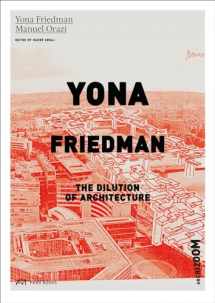
Yona Friedman. The Dilution of Architecture
Book details
Summary
Description
Hungarian-born French architect Yona Friedman is one of the most fascinating architectural theorists of our time. Gaining early recognition for his Manifesto de l’Architecture Mobile, he is best-known for his sketches of the Ville Spatiale, or Spatial City, which applied the core concepts of the manifesto to create mutable “superstructures” over existing cities. The Spatial City represents an important thread running throughout Friedman’s work: He has always sought to provide people with the structures within which to construct and reconstruct their own environment, be it within the slums of the Third World or modern Western cities.
Yona Friedman. The Dilution of Architecture explores Friedman’s process, taking readers through the movements and projects with which he has been involved, from Archigram, an avant-garde architectural group formed in the 1960s; to the construction of ephemeral, emergency architecture in disaster zones; architectural utopianism; and the rise and fall of the megastructure. The book also considers the pedagogical aspect of Friedman’s work, which extended his influence well beyond architecture to planning, information science, sociology, visual art, and filmmaking. Drawing on a recent exhibition at the Archizoom gallery at the Swiss Federal Institute of Technology in Lausanne, the book supplements the essays with a vast collection of sketches, drawings, and documents related to Friedman’s work and concludes with a conversation between Friedman and the Swiss architect and writer Bernard Tschumi.
Friedman’s contributions continue to inspire, and this book offers the first comprehensive overview of his impressive body of work.


We would LOVE it if you could help us and other readers by reviewing the book
Book review



